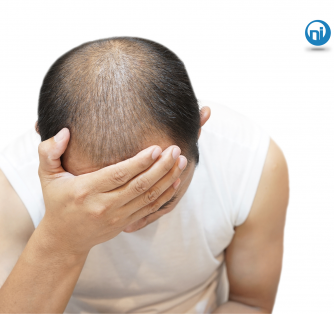Menu
Weight loss
Hormones
Sex
EXPLORE
MEET NU IMAGE MEDICAL
TREATMENTS
MEET NU IMAGE MEDICAL
TREATMENTS
MEET NU IMAGE MEDICAL
Is Your Hair Style Causing Traction Alopecia?


When it comes to feeling confident in who you are and your appearance, a hairstyle has a lot to do with it. Though your style might be your defining feature, it could also be a cause for concern. Over 19 studies have revealed that a hairstyle can lead to traction alopecia. This condition is where a gradual loss of hair occurs when the follicle experiences repeated or prolonged tensions on the hair roots. While it can affect anyone, there are some ethnicities that tend to have more difficulties with traction alopecia.
The Risk Factors
Researchers have looked into causes of hair loss related to styling issues and categorized some of the more common styling techniques and hairdos as low- moderate-, and high-risk categories. It can be hard to change from a style or look that you feel compliments your appearance, but things like weaves, extensions, tight buns, or weighted styles can lead to permanent damage. If you straighten your hair a lot, it could also lead to breakage. Anything that tugs on the roots, such as gluing hair extension to the scalp and later removing them or the weight of hair enhancements, can ultimately lead to long-term damage and loss.
There is also a moderate risk that comes from the styling aids and tools used. Blow dryers, flat irons, or heated curling irons can weaken the hair shafts, increasing the likelihood of loss. The harsh chemicals used perms and hair coloring can also impact hair health, as these products can strip the hair of nutrients and lead to dry, weak hair shafts. The results are damaged hair follicles and roots that will give way and fall out more easily. Using clips or adhesives to hold on wigs or hairpieces also increase the risk of loss.
The Reality Check
No one is asking you to revamp your entire approach to fashion and styling, but there is a need for caution. While your locks might look good now, consider what may happen if you don’t give your hair a break. The most low-risk hairdos are the natural, hanging styles that don’t pull on the hair, but this isn’t always an ideal or even flattering look for some people. Changing things up every now and then can give your hair the rest it needs, and you don’t have to sacrifice your style. It may mean that you only leave your braids or extensions on for a limited time (six to eight weeks), leaving the hair naturally for a few weeks in between styles. There are also changes you can make to your hair care routine to reduce the risk of loss but also cover up any signs of loss that might have already occurred.
Take It Easy
As mentioned, the products and tools that you use have a significant impact on the risk of traction alopecia. The best brush to use won’t pull or tug on the hair roots, making a round bristle brush a good option. Look for a brush that has a combination of short and long bristles and that uses natural boar bristles for the least amount of damage. You should also avoid brushing your hair when it wet, but if you must, use a wide-toothed comb and work through the hair gently.
Keep It Trimmed
Keeping your style neat and trimmed every six to eight weeks can make a difference in the health of your hair. Shorter hairstyles can be more gentle on your scalp, as there is less weight tugging at damaged roots. It can also help make your hair look more voluminous, which a huge boost to your appearance. By altering the way you cut your hair, you may be able to experiment with your hair’s natural part. By alternating how you part your hair, you can relieve tension on some hair and restore airflow. It could also prevent certain roots from experiencing continual exposure to heat damage.
Be Choosy About Products
The products you use each morning can help create a healthy head of hair that is more resistant to problems of loss or damage. Products with high sulfate contents will break down the natural oils of your hair, not only impact the shiny smooth look you desire but also stripping the hair of its protective coating. Avoid parabens and formaldehyde-based products, as well as harsh alcohols or fragrances. Working to restore natural ingredients and nutrition to your hair can minimize loss. Don’t forget the products you put in the body (foods and supplements) have as much impact on hair health as the products you use on your hair.
You don’t have to sacrifice your style for good hair health, but you do need to consider how it may be impacting your risk of hair loss. Making a few simple changes can reduce your risk.
Nu Image Medical® offers a new and futuristic approach to achieving optimal health and wellness. The company has been a weight loss, anti-aging and wellness provider since 2004 and offers medically supervised programs for medical weight loss, peptides, erectile dysfunction, scream cream, and hair loss (NuDew)
This article is for informational purposes only and does not constitute medical advice. The information contained herein is not a substitute for and should never be relied upon for professional medical advice. Always talk to your physician about the risks and benefits of any treatment. Nu Image Medical may not offer the medications or services mentioned in this article.
